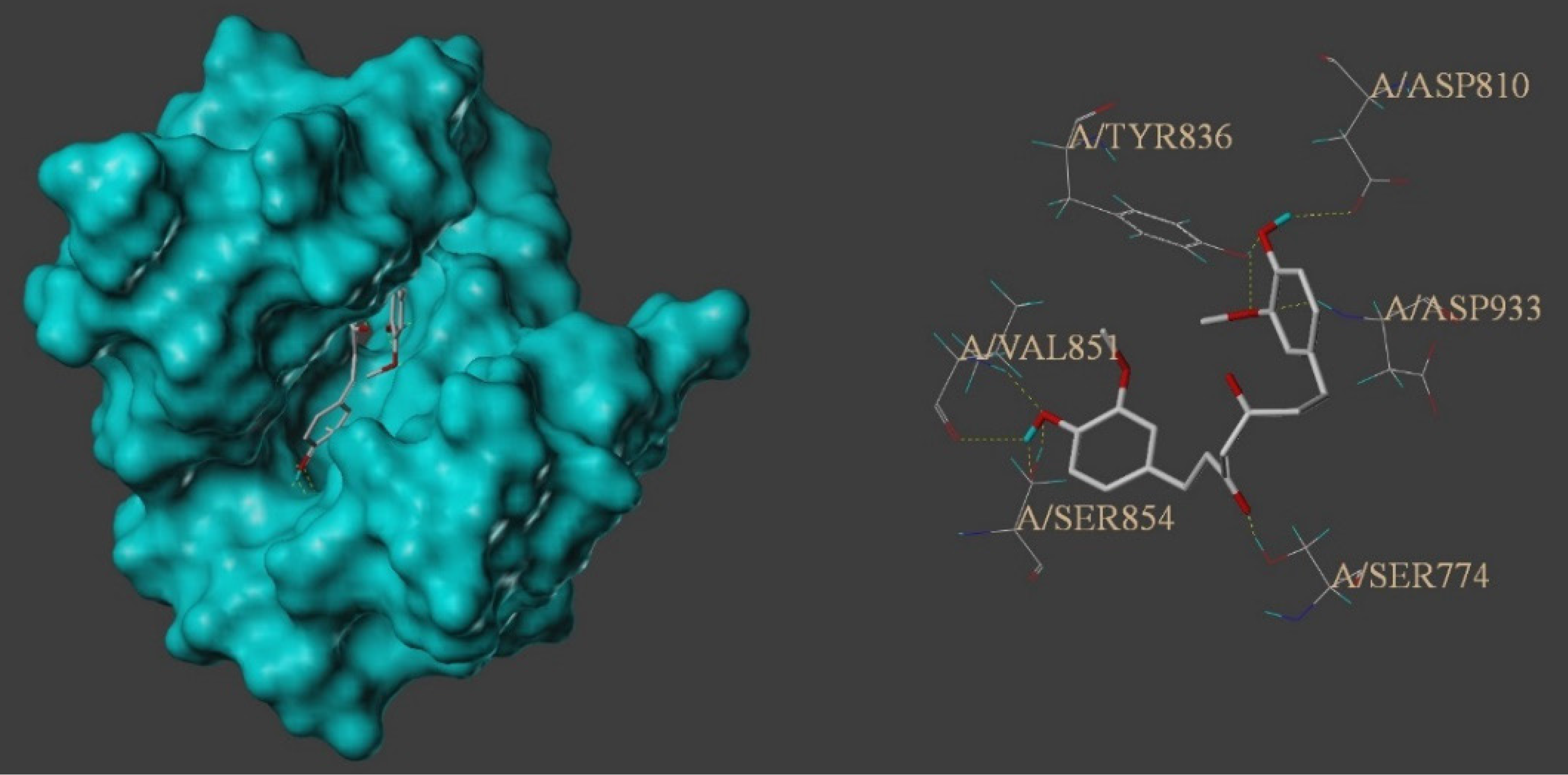Copyright
©The Author(s) 2025.
World J Gastrointest Oncol. Mar 15, 2025; 17(3): 102187
Published online Mar 15, 2025. doi: 10.4251/wjgo.v17.i3.102187
Published online Mar 15, 2025. doi: 10.4251/wjgo.v17.i3.102187
Figure 6 Schematic of the interaction between tetrahydrocurcumin and phosphatidylinositol-4,5-bisphosphate 3-kinase catalytic subunit alpha.
Tetrahydrocurcumin has strong binding activity, forming nine hydrogen bonds in the hydrophobic pocket formed by TYR836, VAL851, SER854, ASP810, ASP933, and SER774 amino acid residues of phosphatidylinositol-4,5-bisphosphate 3-kinase catalytic subunit alpha.
- Citation: Bao ZC, Liu ZD, Zhang Y, Dai HJ, Jia H, Ren F, Li N, Zhao L, Wang YW, Lv SY, Zhang Y. To investigate the effect and mechanism of tetrahydrocurcumin on hepatocellular carcinoma based on phosphoinositide 3-kinases/AKT signaling pathway. World J Gastrointest Oncol 2025; 17(3): 102187
- URL: https://www.wjgnet.com/1948-5204/full/v17/i3/102187.htm
- DOI: https://dx.doi.org/10.4251/wjgo.v17.i3.102187









